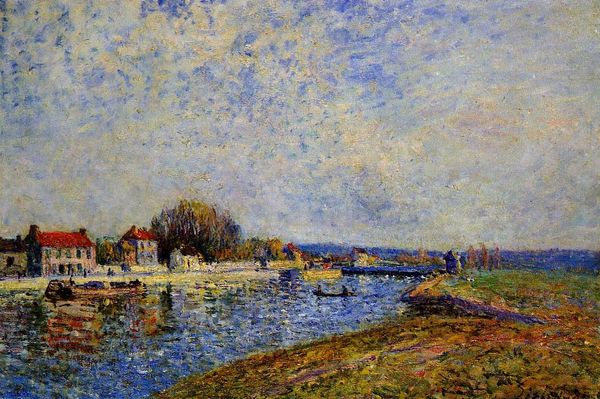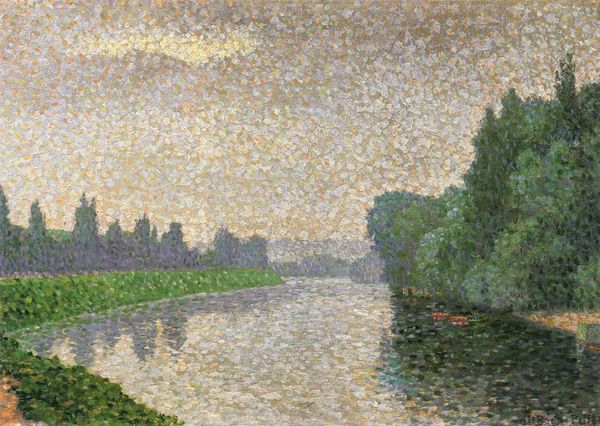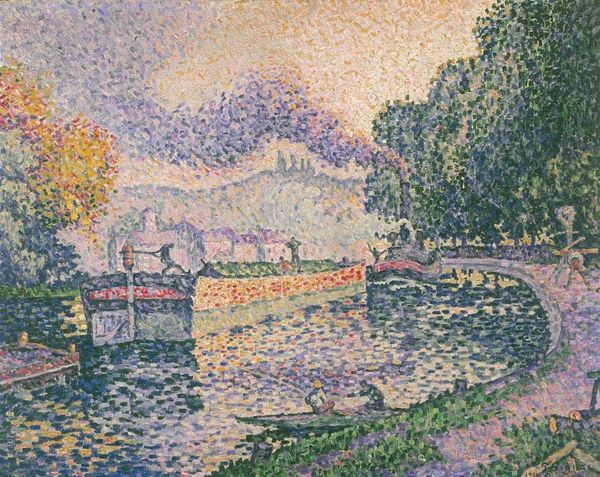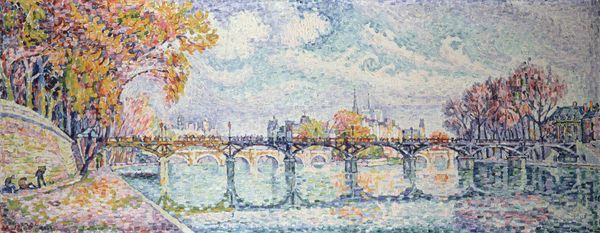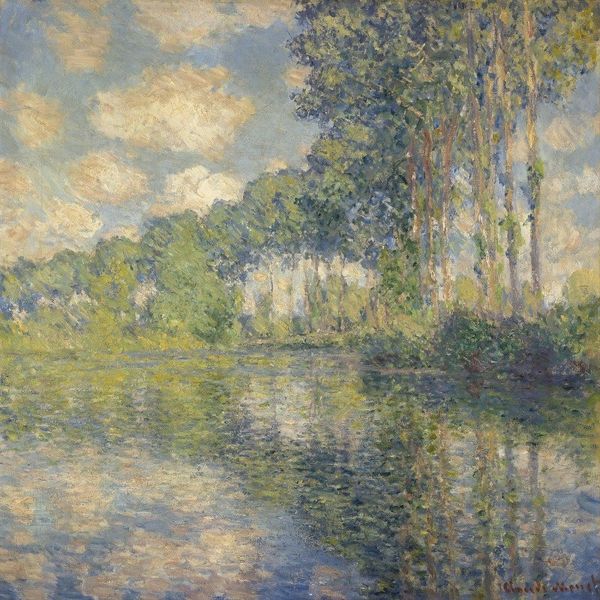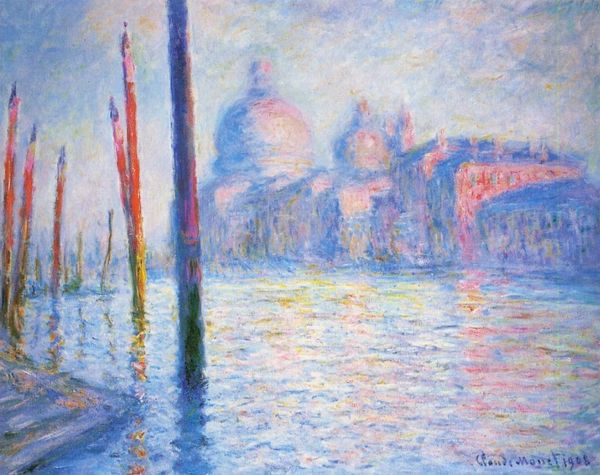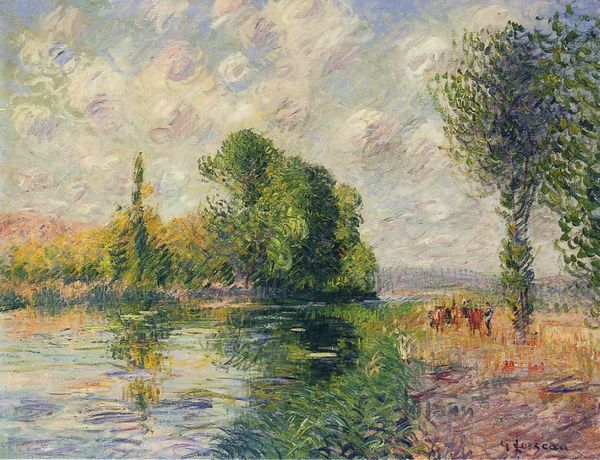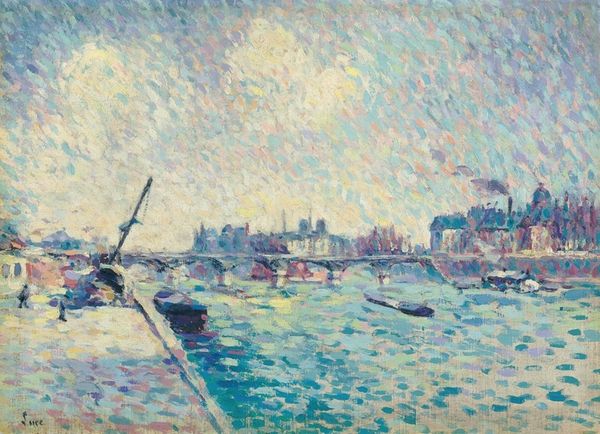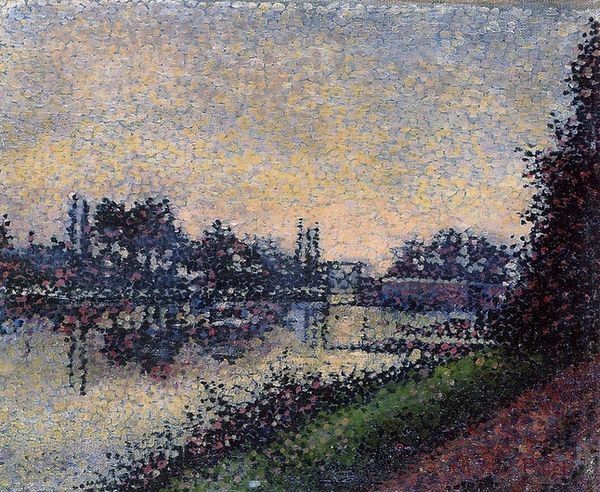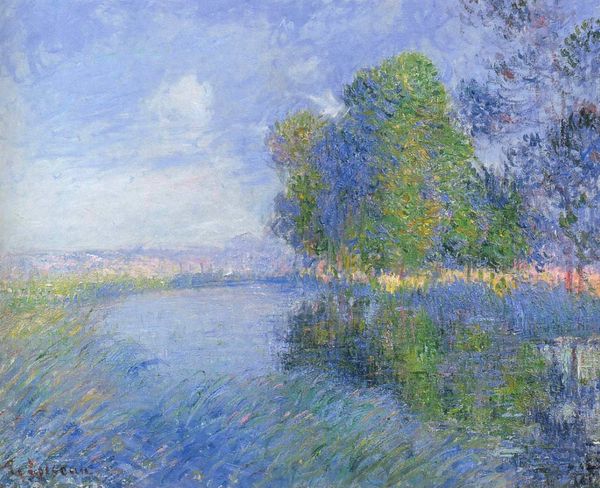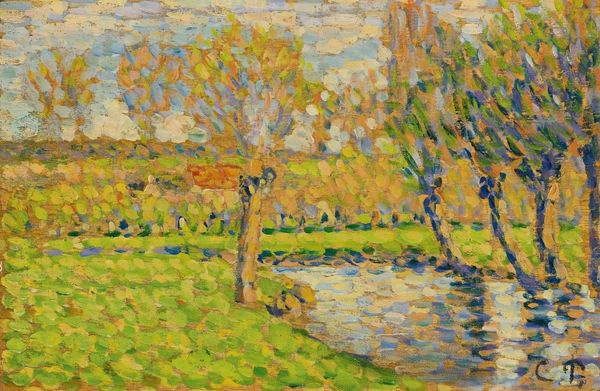
Copyright: Public domain US
Editor: This is Auguste Herbin's "After the Rain at la Roche Guyon," painted in 1906. The oil paint application is so tactile, and the colors, though muted, create this shimmering effect on the water. How would you interpret this scene? Curator: Well, beyond its Impressionist beauty, I see a depiction of a specific place, a moment in time, and a set of social conditions. Impressionism, even with its focus on light and atmosphere, doesn’t exist in a vacuum. How might the development of the French railway system and rise of leisure travel inform these landscape scenes? Editor: I never thought about trains playing a part in Impressionism. I was focused on the pure aesthetic qualities, not social changes. Curator: Think about the access it provided, enabling artists and bourgeoisie to escape Paris, explore new regions, and, importantly, transport their equipment with ease. Artists capturing leisure activities reflected that era. Can you imagine this piece without the bridge? Bridges can act as links between social classes, as well as connecting rural to urban societies. Editor: You're right, I see it now! I notice how Herbin includes both natural elements, such as the trees, as well as these new innovations that were allowing the wealthy to further encroach on untouched environments. Curator: Exactly! Consider how this representation of nature is filtered through the lens of a changing society. What are the politics of landscape? Editor: This makes me think about the relationship between art and industrialization. Thanks for helping me consider these aspects of Herbin's work! Curator: Indeed! By considering all social influences that helped shape these images, you begin to appreciate that even art that is primarily designed for pleasure carries potent social messages.
Comments
No comments
Be the first to comment and join the conversation on the ultimate creative platform.
